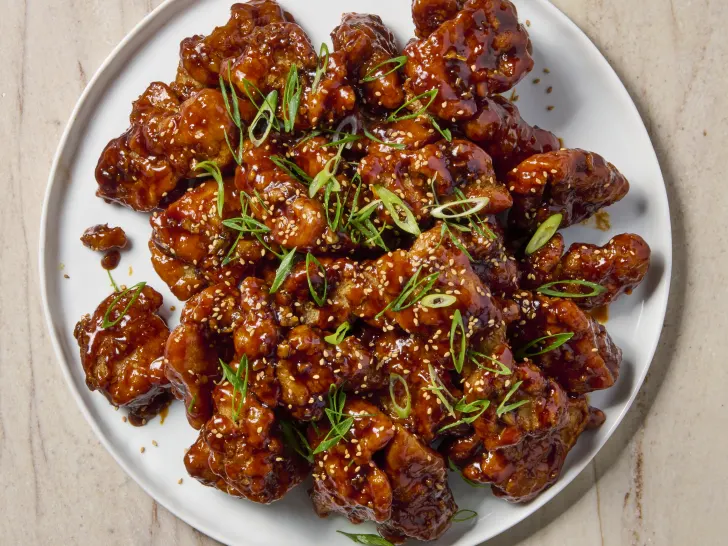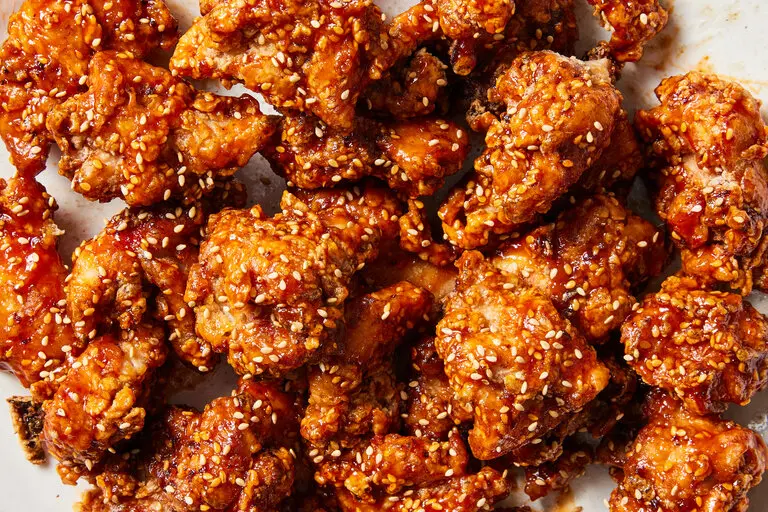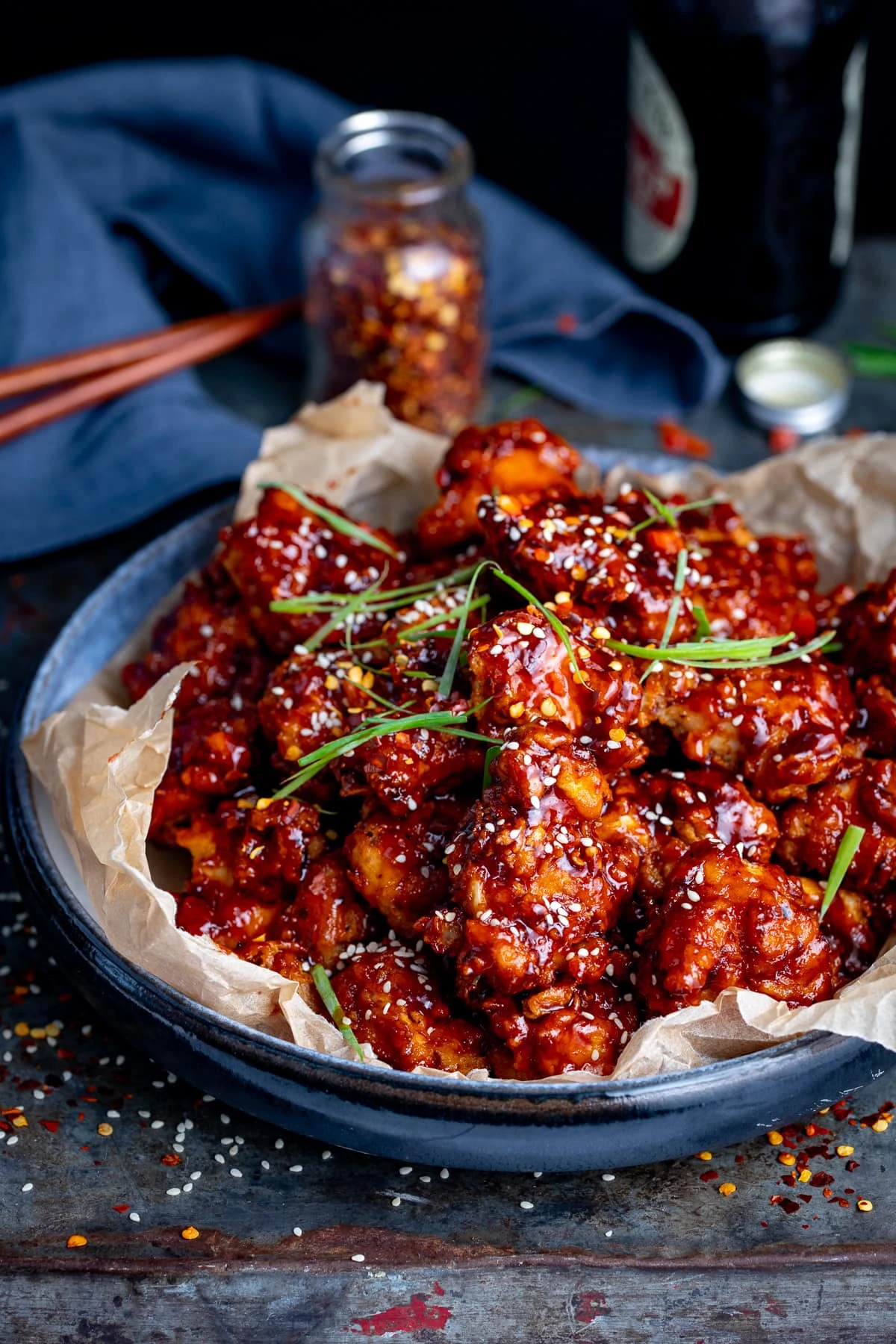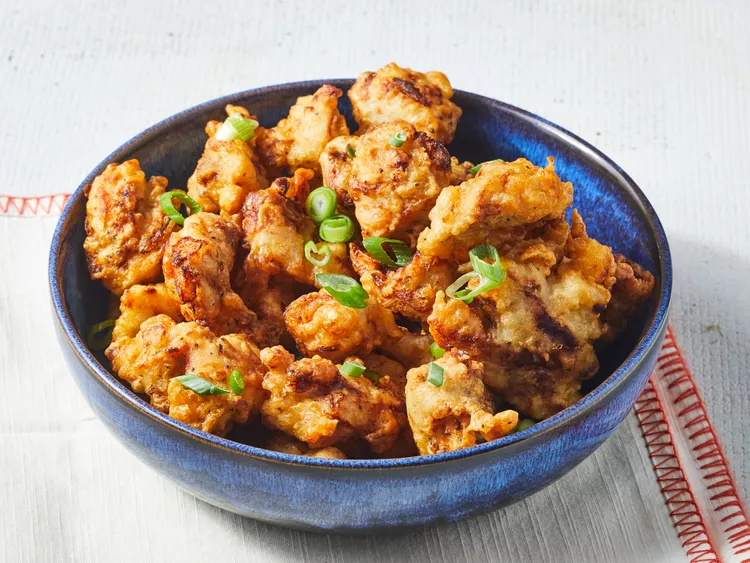Korean Fried Chicken (KFC) has garnered immense popularity worldwide, becoming a staple in many culinary landscapes outside of Korea. Known for its uniquely crispy exterior and flavorful marinades, Korean Fried Chicken is a delightful divergence from traditional fried chicken recipes.
The Origin of Korean Fried Chicken
Korean Fried Chicken has its roots in the 1950s, shortly after the Korean War. It was during this period that Western influences began to permeate Korean cuisine. The first notable mention of fried chicken in Korea can be traced back to a small eatery in the city of Seoul.
By the late 20th century, Korean Fried Chicken shops began to proliferate, particularly in urban centers. Today, it has evolved into a significant cultural phenomenon within South Korea, often enjoyed during social gatherings, celebrations, and late-night snacks.
Characteristics of Korean Fried Chicken
What sets Korean Fried Chicken apart from its traditional counterparts is its double-frying technique. This process ensures that the chicken is not only crispy on the outside but also juicy and tender on the inside. The chicken is typically coated with a light batter or flour, which contributes to its unique texture.
Additionally, Korean Fried Chicken is renowned for its variety of sauces. From sweet and spicy gochujang (Korean chili paste) to soy garlic and honey glaze, these sauces enhance the chicken’s flavor profile immensely, making it versatile enough to cater to various palates.
Popular Korean Fried Chicken Variants
Korean Fried Chicken comes in several popular styles, each offering unique flavors and preparations.
- Yangnyeom Chicken: Perhaps the most famous variant, this kind features a spicy and sweet coating made with gochujang and garlic.
- Garlic Soy Chicken: A flavorful alternative, this version incorporates garlic, soy sauce, and sometimes a touch of sesame oil for a savory finish.
- Honey Butter Chicken: This variant uses a sweet honey butter glaze that contrasts beautifully with the salty, crispy chicken.
- Spicy Chicken: Some versions lean heavily on the heat, providing a piquant experience for those who enjoy a fiery kick.
The Role of Sauces and Marinades
Sauces are a quintessential part of Korean Fried Chicken’s allure. The sauces typically used in preparation play a pivotal role in enhancing flavor.
- Gochujang Sauce: Known for its spicy and slightly sweet undertones, gochujang is a fermented chili paste made from red chili powder, glutinous rice, fermented soybeans, and salt.
- Soy Garlic Sauce: This savory option combines soy sauce with garlic, creating a delicious blend that accentuates the chicken’s natural flavors.
- Sweet and Spicy Sauce: Combining sugar, gochujang, and various spices, this sauce offers an exhilarating burst of flavor.
Marinating the chicken in various concoctions before frying also allows the flavors to penetrate deeply, resulting in a more sumptuous bite.
Health Considerations
While indulgent, Korean Fried Chicken can be enjoyed in moderation as part of a balanced diet. The use of darker cuts of chicken, like thighs or drumsticks, can provide higher moisture content and flavor.
Moreover, the double-frying technique, while resulting in a crispy exterior, also allows for excess oil to drip off, which can eliminate some of the fat content.
It’s important to pair Korean Fried Chicken with sides like pickled radish or fresh vegetables, balancing the meal and adding nutritional value.
The Global Appeal
In recent years, Korean Fried Chicken has made significant strides on the international stage. Various cultural influences, along with the global popularity of Korean cuisine, spurred by K-dramas and K-pop, have propelled demand for authentic Korean Fried Chicken.
Many Western cities now boast a plethora of restaurants specializing in this culinary treat, reflecting its global appeal. The unique fusion of flavors, textures, and sauces attracts food enthusiasts eager to experience the robust tastes of Korean cuisine.
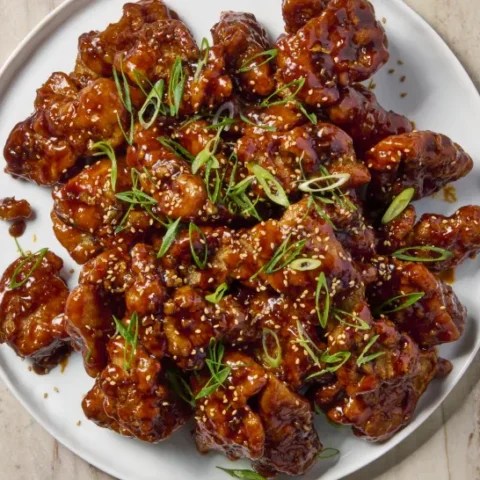
Korean Fried Chicken Recipe
Ingredients
- **For the glaze:
- 10 cloves garlic
- 1 tablespoon canola oil
- 1/2 cup soy sauce or tamari
- 1/2 cup packed light brown sugar
- 1/4 cup rice vinegar
- 1 tablespoon cornstarch
- 1 tablespoon water
- 2 tablespoons gochujang paste
- 2 teaspoons toasted sesame oil
- **For the fried chicken:
- 2 to 2 1/4 pounds boneless, skinless chicken thighs, preferably large
- 2 cups cornstarch, divided
- 2 teaspoons garlic powder
- 1 teaspoon ground ginger
- 2 1/4 teaspoons kosher salt, divided, plus more for seasoning
- 1 1/2 teaspoons ground white pepper, divided
- 1 1/2 teaspoons baking powder, divided
- 3 cloves garlic
- 1 (1/2-inch) piece ginger
- 3/4 cup cold water
- 1 tablespoon soy sauce or tamari
- 1 tablespoon rice vinegar
- 5 cups canola oil, or another high-smoke-point neutral oil
- Garnish options: Scallions thinly sliced on a diagonal, toasted sesame seeds
- Kimchi ranch and pickled radishes, for serving (optional, recipes below)
Instructions
- Finely chop 10 garlic cloves (about 1/2 cup).
- Place the garlic and 1 tablespoon canola oil in a small saucepan over medium-low heat to infuse.
- Cook, stirring frequently, until the garlic is fragrant and lightly golden-brown (3 to 6 minutes).
- Add 1/2 cup soy sauce, 1/2 cup packed light brown sugar, and 1/4 cup rice vinegar.
- Increase heat to medium high and bring to a simmer.
- In a small bowl, whisk 1 tablespoon cornstarch and 1 tablespoon water until well combined.
- Add the cornstarch slurry to the sauce and cook, whisking often, until bubbling and thickened.
- Turn off the heat.
- Add 2 tablespoons gochujang and 2 teaspoons toasted sesame oil, whisk to combine.
- Transfer to a large bowl.
- Pat 2 to 2 1/4 pounds boneless, skinless chicken thighs dry with paper towels.
- Cut into rough 2-inch pieces (about 5 per thigh).
- Make the dredge:
- In a medium bowl, combine 1 cup cornstarch, 2 teaspoons garlic powder, 1 teaspoon ground ginger, 1/2 teaspoon baking powder, 3/4 teaspoon kosher salt, and 1/2 teaspoon ground white pepper. Whisk to combine.
- Make the batter:
- In a second medium bowl, combine the remaining 1 cup cornstarch, 1 teaspoon baking powder, 1 1/2 teaspoons kosher salt, and 1 teaspoon ground white pepper.
- Finely grate 3 garlic cloves and 1/2-inch piece peeled ginger into the bowl.
- Add 3/4 cup cold water, 1 tablespoon soy sauce, and 1 tablespoon rice vinegar, then whisk until combined.
- Heat 5 cups canola oil in a heavy-bottomed pot or deep skillet over medium heat until it reaches 350°F.
- Test if it’s hot enough by dropping a bit of the batter into the oil.
- Line a baking sheet with paper towels or fit with a wire rack.
- Coat the chicken in batches of 8 to 10 pieces:
- Dredge chicken pieces in the dredge, tossing until evenly coated.
- Shake off the excess, then dip into the batter and toss.
- Let excess batter drip off and return to the dredge, pressing to create crunchy bits.
- Transfer to a second baking sheet and rewhisk the batter as needed.
- Fry the chicken in batches of 8 to 10 pieces:
- Carefully add each piece into the hot oil, frying until cooked through and golden-brown (6 to 8 minutes).
- Use a slotted spoon or spider to transfer to a wire rack or paper towels, sprinkling with kosher salt.
- Toss the fried chicken in the glaze in batches until evenly coated.
- Garnish with toasted sesame seeds and sliced scallions.
- Serve with kimchi ranch and pickled radishes if desired.

At Villa Corona Mexican Grill, we’re passionate about sharing our love for authentic Mexican seafood dishes with food enthusiasts like you. Dive into our feed to discover mouthwatering photos and videos of our delectable ceviches, fish tacos, shrimp cocktails, and more. We’ll take you on a culinary journey through Mexican coastal cuisine’s vibrant flavors and rich traditions.
Get ready to tantalize your taste buds and embark on a flavorful adventure with us. Follow, like, and share to become part of the Villa Corona Mexican Grill family today! 🌊🍤🌶️ #MexicanSeafood #VillaCoronaMexicanGrill

